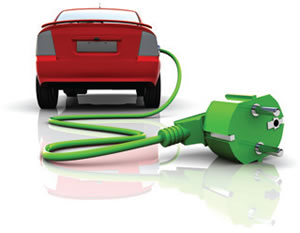An Often Overlooked Component

IMAGE © MMAXER/SHUTTERSTOCK
Having reliable service vehicles, in a school division’s operations department, is essential. You can have the best technicians in the world, but if you do not have a functional and reliable fleet, the service technicians can often be left stranded. Work at schools and support sites would then be compromised. It is imperative to have a strategic plan when it comes to maintenance, replacement or refurbishment of your service vehicles. A school division must examine its resources to determine what is viable in order to sustain a functional fleet.
Reductions in operating budgets have made it difficult for many school divisions to maintain older vehicles, as well as purchase newer replacement vehicles. Many questions should be posed when surveying operational sufficiency. The first question that should be asked is if the school division has adequate monetary resources to support maintaining or purchasing the fleet. It is important to have the financial resources for maintenance of your fleet. If your fleet is older and the vehicles have not been updated, a school division must prepare to manage parts, materials and service. Expenses for these commodities can escalate quickly if repairs are needed for engine, transmission or other major mechanical areas of a vehicle. If the cost of these materials outweighs the productivity and service of the owned older vehicles, it may be time to re-evaluate how you are investing money into your fleet.
A viable option may be entering into a multi-year lease with a service agreement. The first step would be calculating the costs for the operation and maintenance of your existing fleet, while comparing those expenditures to the cost of a lease. One preferable choice may be a multi-year lease that offers a variable amount of mileage for each vehicle. Auctioning the older and previously owned vehicles is an excellent way to offset costs to initiate this type of endeavor.
There are ways to structure the lease to fit a school division’s needs. A lease with variable limits on mileage, with little or no maintenance and little to no money down, are good aspects to a lease. Several automobile dealerships now offer convenience packages with their lease options. The options they offer include free towing, free state inspections and free oil changes. There are typically no- or low-maintenance costs with this type of lease package, which is beneficial in reducing expenses. Once the lease term expires, simply turn the service vehicle in and initiate a new multiyear lease. The benefit is a brand new fleet with no or low maintenance costs. Due to the warranty options that are available with new vehicles, a school division has a reliable fleet while also saving money. There are multiple advantages of leasing new vehicles.
A new fleet offers the opportunity for more efficient maintenance for schools and support sites. Service technicians must have reliable transportation in order to get the parts and the materials to the schools. The technician will benefit from being in newer and safer vehicles. A school division will see a reduction in vehicle maintenance costs.
If a schools division chooses to include a partial green fleet then the community can see a commitment to being energy efficient. The lease can include hybrid vehicles, which is good for decreasing costs for fuel, while maintaining green best practices. Utilizing a hybrid model not only increases fuel efficiency but can also reduce gas consumption up to 20 percent. It is also important to consider how your vehicles will be powered. Battery operated, natural gas and re-purposed gasoline vehicles are all means to promote fuel efficiency.
A reliable service fleet is essential in providing service technicians a way to complete the necessary work in school buildings. Having an inadequate fleet hinders productivity. With a proper strategy your school division can maintain a good fleet that allows workers to be safe and have the resources needed to maintain school buildings efficiently.
This article originally appeared in the issue of .
About the Author
John A. Bailey, Ph.D. is the director of School Plants for Chesapeake Public Schools and a National School Plant Managers Association board member, representing Virginia, and a Virginia School Plant Managers Association board member, representing Region II, in Virginia.